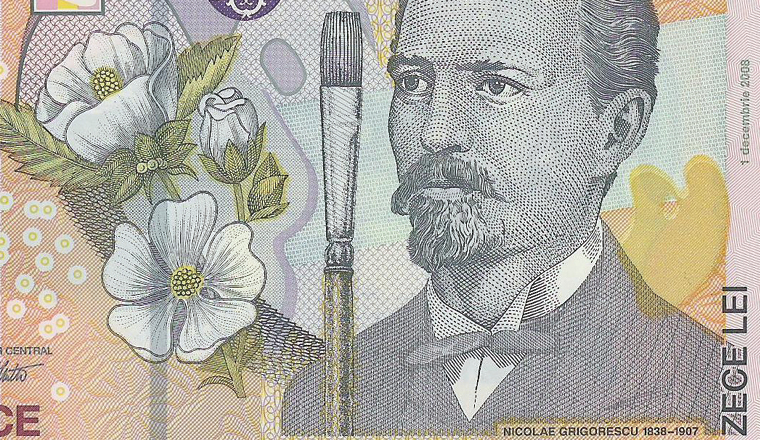Published: May 4, 2017
Romania’s patience pays off
Romania placed its lowest yielding 10-year bond ever in early April, and the sovereign was rewarded for holding off from printing immediately after its mid-February budget.
The borrower, rated Baa3 by Moody’s and BBB- by Standard & Poor’s and Fitch, raised €1.75bn on April 10 via a new €1bn 10-year bond and a €750mn reopening of its 3.875% October 2035 paper.
“It was a very successful trade,” a bond banker told EMEA Finance. “This has cut what Romania pays for its 10-year debt considerably.”
The 10-year portion of Romania’s deal priced at a yield of 2.411%. The sovereign issuer’s last 10-year market outing came in October 2015, when Romania printed a decade long trade with a yield of 2.845%.
The October 2025s were then subsequently tapped in February 2016 at a yield of 2.55%.
“It’s a mixture of things behind it,” said the banker. “The political worries in Europe have subsided a little, with people calming down a little over things like the Brexit vote and the Dutch vote not getting the populist outcome that some feared.”
In spread terms, the 2027s came at 170bp over mid-swaps. They were initially marketed at 185bp over mid-swaps before guidance was tightened to plus 175bp to 180bp.
The bonds performed in the secondary market, with a bond trader who asked not to be named spotting them up by half a point on their cash price the day after printing.
“This suggests that the syndicates got the pricing levels right,” said the trader. “If it was too expensive, you’d have seen it sell off in the aftermarket, but that didn’t happen even though it was a record low yield for the borrower.”
Tapping for lower yield
Meanwhile, Romania also raised money from its outstanding 20-year debt at far cheaper levels than where it originally priced.
The October 2035s printed alongside the October 2025s in 2015 at a yield of 3.93% and were tapped in February 2016 at 3.9%.
They were tapped at a yield of 3.55% - marking a 35bp tightening since the last time they were opened.
Romania began marketing the tap at initial yield thoughts of 3.65% area, before cutting guidance to 3.6% area.
The 2035 notes now total €2bn, “thus creating the potential to enhance liquidity programmes,” said Romania’s ministry of finance in a statement.
Barclays, Citi, Erste Bank, ING and Societe Generale ran Romania’s dual tranche deal.
Romania announced in February that it planned €2.5bn to €3bn of international issuance this year, but decided to hold off from immediately coming to the market because of the political upheaval in Europe, according to a third banker.
“They wanted to allow the market time to absorb some of the biggest potential shocks,” the banker said.
The gambit worked. Not only did the bonds have the tightest yields for the issuer at that part of its curve, but combined demand reached €2.86bn from 281 accounts.
The new issue saw orders from 145 investors, with domestic names making up 21% of demand – the highest proportion – followed by other Central and Easter European names taking 18%.
This is a marked difference from the tap, which saw UK accounts take the lion’s share of the bond, with a 40% allocation.
GDP shines
Romania’s ministry of finance pointed to improving economics in the country as a driver behind the success of both tranches, with the country’s minster of public finance Viorel Stefan, tipping his hat in a statement to recent reports from international ratings agencies.
“The success of the issue of Eurobonds…show credibility enjoyed by Romania on international markets and appreciation of economic developments, prospects for growth, and for macroeconomic and financial stability, issues highlighted well as in recent reports by international rating agencies,” said Stefan.
Moody’s said in January that Romania and Slovenia stand apart from their Central and Eastern European neighbours Poland and Croatia, which are both on negative watch.
“By contrast, the positive outlooks on Romania and Slovenia reflect the gradual improvements in both countries’ institutional frameworks as well as robust growth expectations for Romania,” said Moody’s.
Meanwhile, S&P, which has Romania on a stable outlook, said in April that the country’s ratings are well supported by its moderate external and government debt and reasonably firm growth prospects.
The European Commission raised its growth forecast for Romania in February, putting the amount for 2017 at 4.4%, from the 3.9% predicted in November 2016.
The World Bank projected at the start of this year that Romania’s GDP will rise by 3.7% in 2017 and 3.4% next year – well above the 1.8% average growth expected across Western Europe. Romania’s national office of statistics said on April 7 that it had revised the economic growth rate for the final quarter of 2016 up by 10bp to 4.8% year-on-year.


